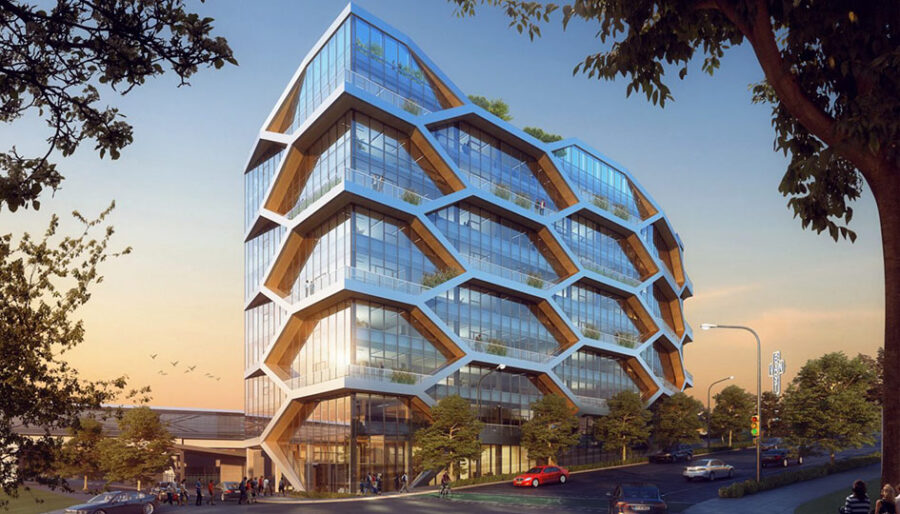The federal government has made a $3.5-million contribution to the construction of 2150 Keith Drive, an innovative hybrid mass timber commercial office building in Vancouver’s False Creek Flats neighbourhood.
The contribution will be made through the Green Construction Through Wood (GCWood) Program that supports projects and activities that increase the use of wood as a low-carbon construction material in infrastructure projects.
Featuring a unique honeycomb-shaped exterior, 2150 Keith Drive will be 10 storeys tall and over 15,000 m2. It will be constructed with advanced mass timber systems using prefabricated cross-laminated timber (CLT) panels and glue-laminated (glulam) timber columns, braces and beams.
Due to its wooden braced-frame system on the exterior, the design eliminates the need for an interior concrete core, thereby reducing its environmental impact. The replicable shape of its exoskeleton design also makes it ideal for more sustainable, cost-efficient and green construction.
Exposed wood will be a major feature of the interior spaces. The use of mass timber is complemented by a palette of earth tone materials, including composite metal panels, wood soffits, and ample glazing. With balconies located between brace bays on the south, west and east elevations, the building features unique alternating outdoor space on each floor. At the top of the building, the facade extends beyond the top office floor to create a windscreen and guard for an open-air roof deck with plants, urban agriculture, and views to the North Shore mountains and the downtown Vancouver skyline.
The building is the tallest braced-frame mass timber project or building in North America and will employ an innovative seismic resistance system. The building is also targeting a minimum LEED Gold certification. Construction began last year and completion is expected in 2025.
“The Dialog design team is grateful for the financial support from Natural Resources Canada that has driven the development of innovative design and construction strategies that are economical, replicable and an important part of a sustainable future,” said Justin Tompson, senior architectural technologist, associate, Dialog.










